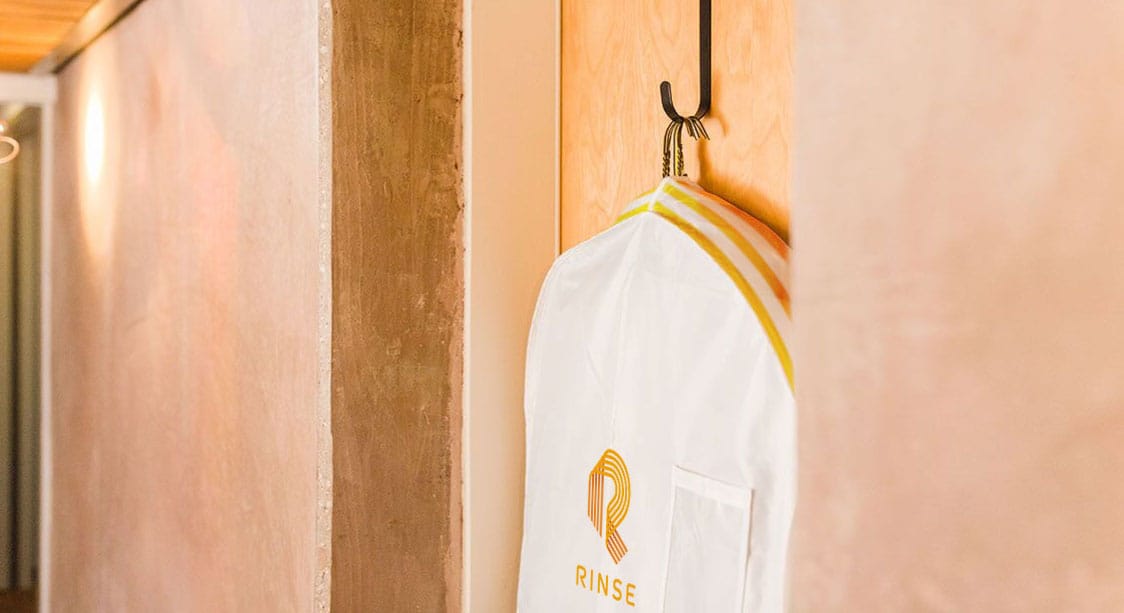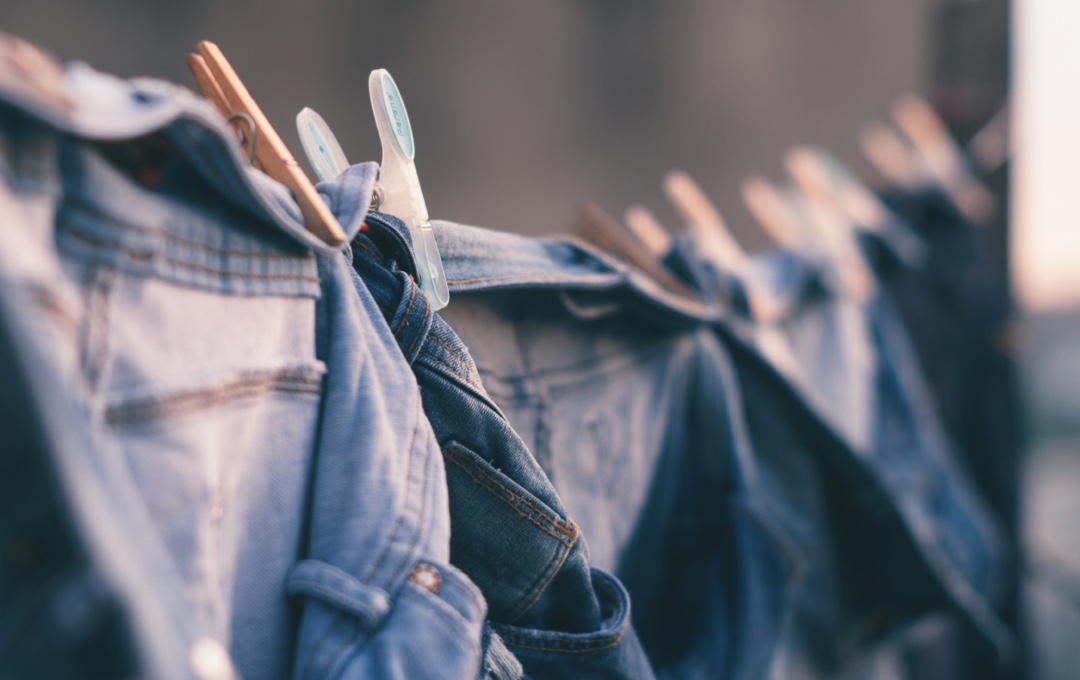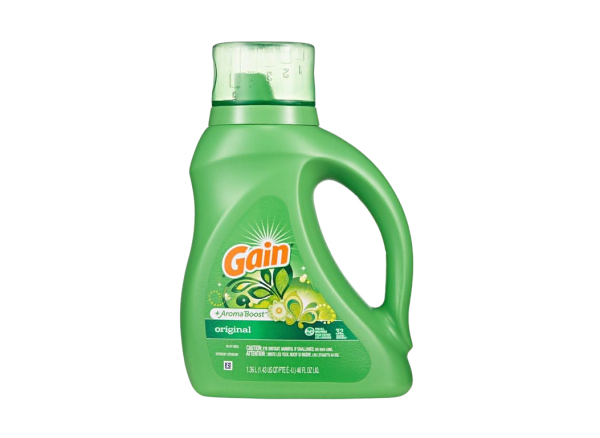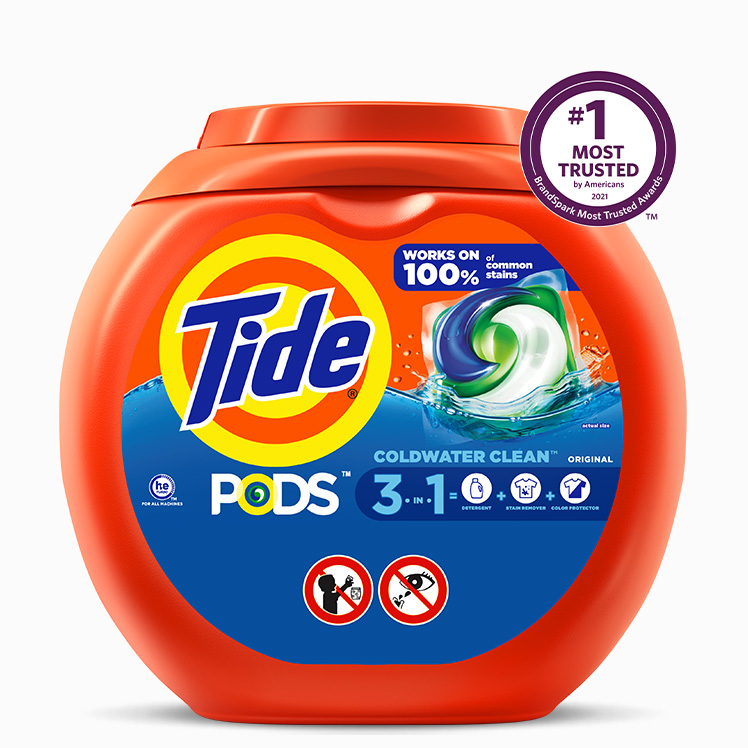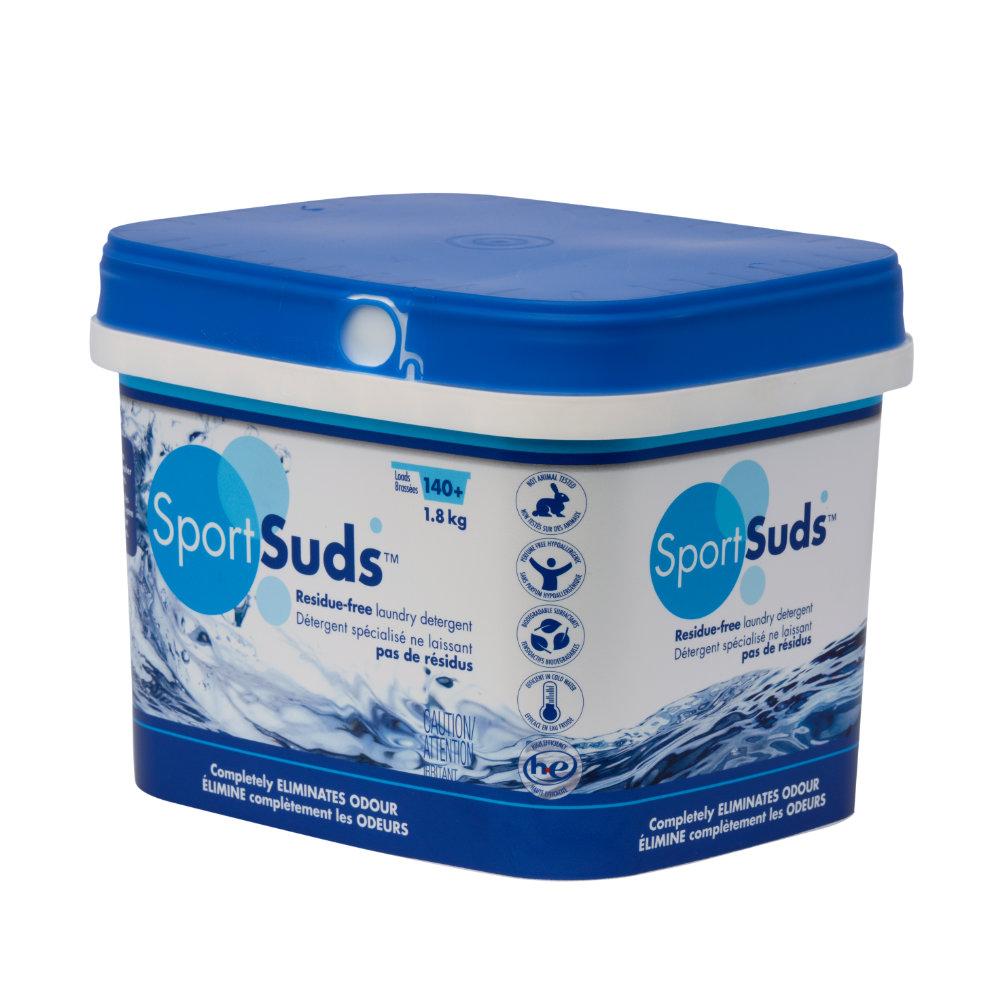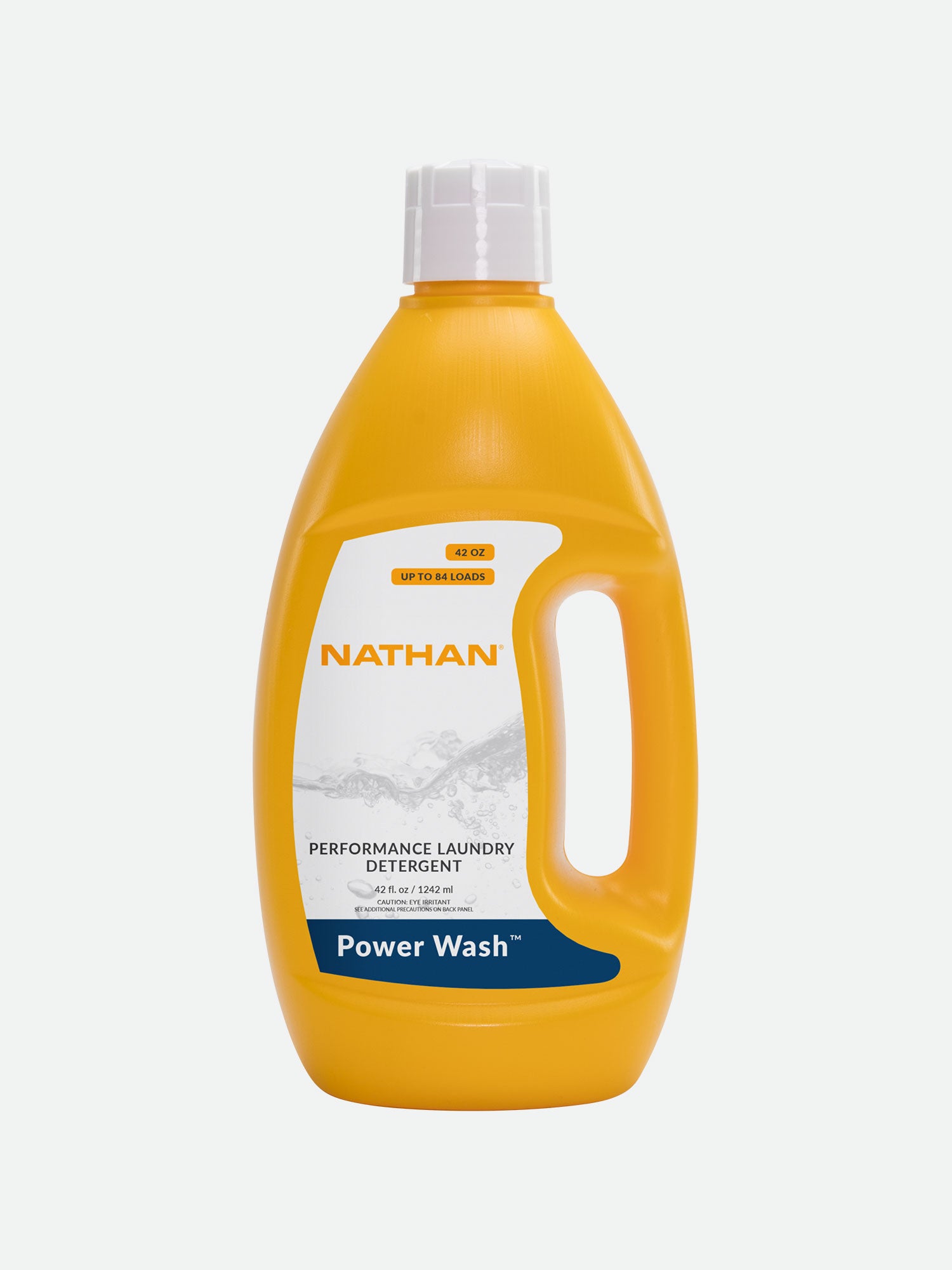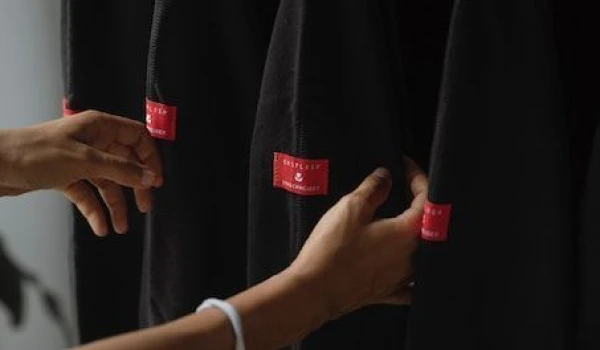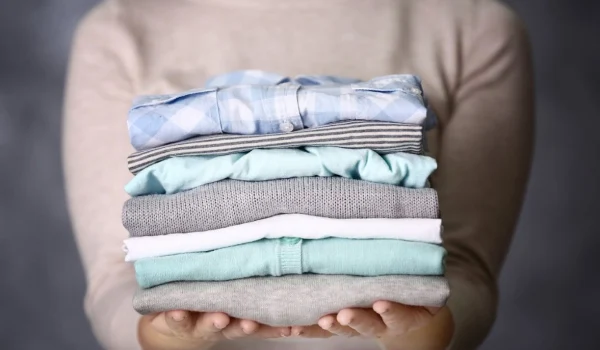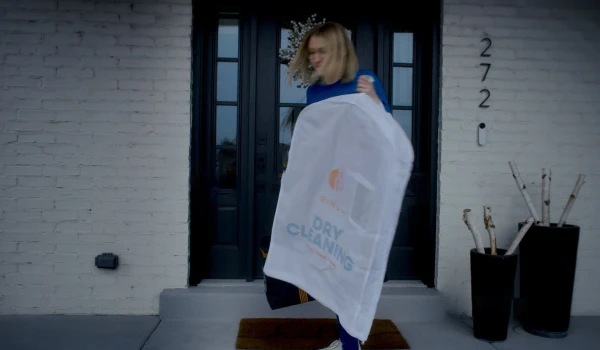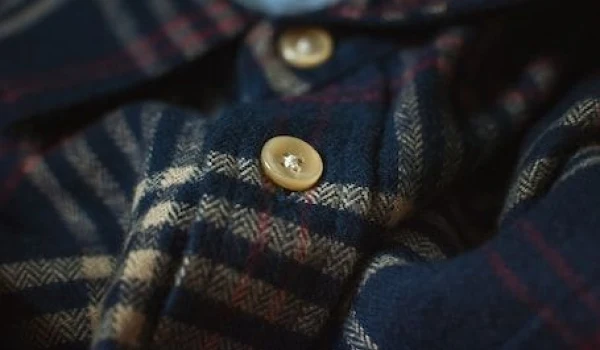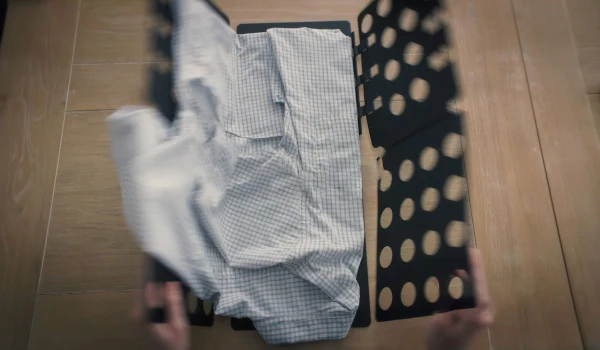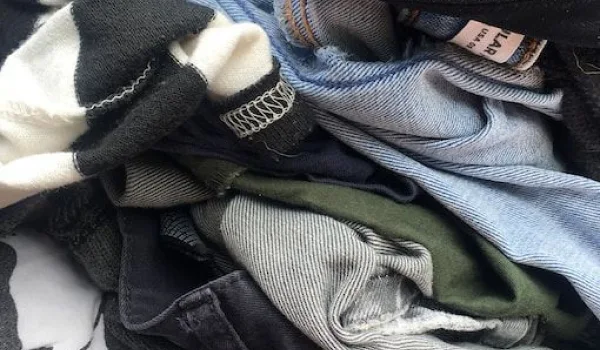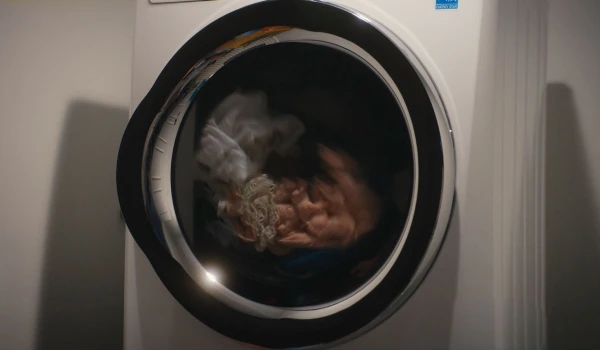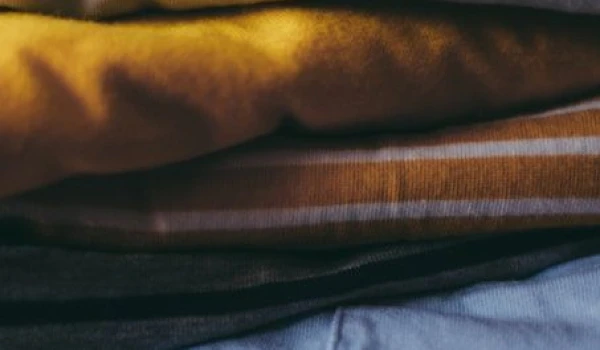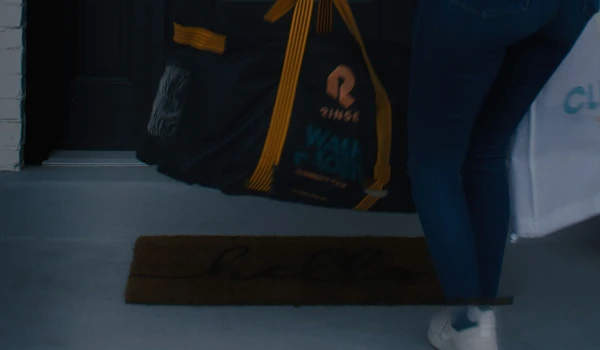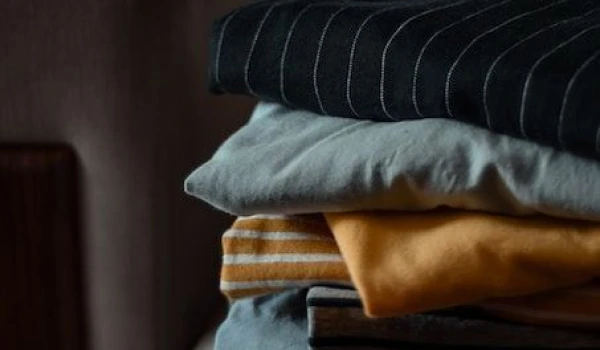Care
Clothing care tips to make your wardrobe last

Cleaning
Preparation
Before you wash your shirt, undo all the buttons—including the button cuffs—and remove any collar stays.

Pre-treat stains
For any food, ink, or sweat stains, you can pre-treat them with a stain remover. Let the formula soak in the fabric for about 20 minutes before you continue cleaning.
Wash
Wash shirts in cold water using the delicate cycle on your washing machine. If you’re dealing with oil-based stains, warm water will improve the chances of the stain washing out. Just make sure you don’t do this too often as repeated warm washing can cause colors to fade.
Drying
Hang the shirt to dry on a plastic hanger and button up the top two buttons to maintain the shirt’s shape. If you want to get ahead of ironing, you can put the shirt in the dryer on permanent press mode but make sure it’s only in the dryer for six to eight minutes max.
Ironing

Check the shirt’s label for its fabric content so you can select the appropriate heat setting on your iron. Cotton shirts or cotton-blend shirts can typically withstand higher heat than ones made of synthetic fibers (e.g. polyester), which require a lower temperature. For best results, shirts should be slightly moist. If you prefer a crisp finish to your shirt, use spray starch or iron the outside of the shirt first, then flip it inside out to iron the inside.
Start with the collar
Spray the shirt collar with water to lightly moisten it. Lay the collar flat and start ironing the underside from one point to another. Flip the collar over and repeat on the other side.
Move onto the cuffs
Spread the button cuffs open. Iron both sides of the cuff but avoid ironing over the buttons.
Iron the front of the shirt
Move the iron carefully around the shirt’s front buttons. Iron each side of the shirt, moving the iron from the shoulder down to the bottom.
Iron the back of the shirt
Anchor one of the shirt’s sleeves into the square edge of your ironing board and lay the shirt flat. Start ironing at the top of the shirt and then move the iron down. Slide the shirt over to iron the other half of the shirt.
Finish with the sleeves
Use the sleeve seam as your guide for laying the shirt sleeve flat on the ironing board. Make sure the sleeve is flat and smooth before you iron or else you may be cementing creases on the other side. Start ironing from the top of the sleeve to the cuff. Flip over and repeat on the other side, and then move onto the other sleeve.
Storage

Everyday shirts should be fully buttoned, hung on a sturdy hanger, and stored in your closet. For shirts that you don’t wear often, store them in a cotton garment bag. The cotton allows for air to circulate and prevents the shirts from yellowing.
Knowing how to properly care for your button-down shirts will ensure they stay as clean and crisp as the day you bought them. For days when your schedule is running you ragged, you can bring your button-down shirts to a dry cleaner, who will provide a professional clean and press service for your wardrobe’s most essential pieces. You can also check if you're in Rinse's service area to have your clothes picked up, professionally cleaned, and hand-delivered to your door.
Photos: O_Lypa / Shutterstock.com, chuugo / Shutterstock.com, Di Studio / Shutterstock.com, TaraPatta / Shutterstock.com

We all have that favorite pair of jeans we hop to hang onto forever. Though all good things evenutally come to an end, you can determine how long your jeans will last by considering these three factors.
Invented by Jacob Davis and patented by Levi Strauss, the blue jean was originally intended to be a flexible and durable work pant for miners and cowboys in the 1870’s. Today’s blue jeans, which are more versatile and fashion-focused, remain a staple of the modern wardrobe in part because of their durability. The average useful life for a pair of blue jeans, according to the International Fabric Institute Fair Claims Guide, is well over one year.
While there is a natural level of wear and tear to any garment, the life and value of your jeans depend on three variables:

The quality of the fabric:
Most jeans are primarily made of cotton with some spandex provided to enable the fabric to stretch. When you blend fabric, you introduce more variability. While adding spandex may create a better fit, the designers are trading comfort in exchange for some vulnerability in the fabric. If you’re looking for durability, we recommend jeans with as little spandex as possible. Additionally, make sure you check the care label for warning. If the label of your jeans says that they are not pre-shrunk and or their color may bleed, you can reasonably expect them to change shape and color faster than other garments.
How often you wear jeans:
The useful life is dependent on the amount of strain put on the fabric of the garment. The more you wear denim, the more friction and stretching placed on the material, which slowly weakens the garment’s weave.
How do you care for jeans:
There are two major factors related to how you care for your jeans that will contribute to the value of the garment:
- How the jeans are washed: Similar to the strain put on the fabric through multiple wears, washing your jeans can cause deterioration over time. Specifically, residential washing and drying machines add a high volume of friction to garments. To avoid putting unnecessary strain, we suggest either hand washing your jeans or bringing them to a professional cleaner like Rinse. We offer door-to-door service, 7 days a week and we have decades of experience cleaning jeans.
- When the jeans are washed: We often hear customers say that they avoid washing their jeans too much because they fit better over time when they do. While this is true since washing denim will cause the garment to shrink over time, leaving stains on your denim for long periods will also cause deterioration. The general rule of thumb is to wash your jeans as soon as they need to be cleaned in order to limit the amount of time a stain has to set.

Read our guide to learn how to preserve your favorite denim garments.
Whether you wear designer dungarees, a Texas tuxedo, or hipsteresque jorts, the way that you care for your denim will have a big impact on how your garments look, feel, and how long they will last. Here are a few simple rules to follow that will help you keep your denim garments in great shape:
-
Follow the care label instructions: By default, the proper care for denim is found on the care label. Typically, denim care labels will have both washing and drying instructions that are specific to each garment. Some denim dyes are water soluble and some aren’t, so designers will typically change their washing instructions based on the type and amount of dye used to color each garment. Most denim garments are made of a majority of cotton and a small amount of spandex, which enables the fabric to stretch to hug the contours of your body. Spandex is very heat sensitive, so denim producers will adjust their drying instructions based on the amount of stretch they have built into the garment’s weave. When you wash your denim, the most important thing to do is follow the care label 100% of the time.
-
Turn denim inside-out before washing: You always want to turn your denim garments inside out before washing them. Turning your garments inside out will reduce the friction on the dyed portion of the garments. It will also protect any buttons or grommets attached to your clothes. By limiting the amount of friction on the garment, you lower the stress applied on the dyed side of the fabric, and therefore the amount of dye that is lost during the cleaning process.
![denim]()
- Treat stains quickly: The more time a stain sits on your garment, the more likely it is to set. When your denim gets dirty, minimizing the time between when the garment is soiled and when it is cleaned will raise your chances of removing the stain entirely. When stains are treated quickly, you are likely to reduce the amount of friction required to clean the garment. This in turn reduces the amount of dye lost, and the wear and tear your denim will endure during the cleaning process.
-
Decide between optimizing for fit or color preservation:
- Optimizing for Fit Preservation: If you care more about keeping your denim in perfect shape, avoid unnecessary and prolonged exposure to heat. The recommended course of action is to launder your garments in cold water. After the laundering process, we suggest that you hang dry denim to avoid prolonged exposure to heat. If you're washing on cold and air drying it, there will be less wear and tear on the weave of the garment over time.
- Optimizing for Color Preservation: If your main concern is preserving the color of your denim, use a dry cleaning process. Most denim dyes (ie: indigo) are water soluble. Dry cleaning uses a non-water based solvent, which means that a minimal amount of dye will be lost during the cleaning process. While there is some heat involved in the dry cleaning process, which may cause minor changes to the fit of your denim, it is the best way to preserve the color of your garment.
If denim care is important to you, you’re best served trusting your garments to a professional cleaner. While there are some hard and fast rules to keeping your denim looking great, an experienced cleaner will have the tools and experience to properly evaluate and treat each garment correctly.

Maintaining your denim is entirely dependent on the skill of the person cleaning the garment. With that in mind, here’s a breakdown of the benefits of bringing your jeans to a cleaner vs. caring for them yourself:
Professional cleaners
The pros:
Professional cleaners have - as expected - a lot of experience cleaning jeans. They follow the individual garment care label instructions. The care labels usually have water temperature and drying heating settings, which pro cleaners should follow on an individual garment basis.
While you can follow the care label carefully yourself, the big difference is that a high-quality cleaner like Rinse is trained to recognize how to recognize and treat stains of all types.
Before washing your jeans, most dry cleaners will go through a step called “pre-spotting,” where they give attention and treatment to individual stains. For best results, it’s helpful to tell the cleaner what type of stain is on your jeans. The cleaners will use specific solvents and cleaning techniques to get rid of those stains, which is a step that isn't done when you are relying on a washing machine to remove stains.
The cons:
The only downside of professional cleaning is the price, which is not to be overlooked since costs can accumulate if you're cleaning multiple pieces.
Our recommendation is to bring your jeans to a professional cleaner when you have a stain that needs treatment. If your denim is stain free, it makes more sense to wash your denim yourself via the laundry and hang dry route.
Hand washing
The pros:
Using a bucket and some mild detergent is the most gentle way to care for your jeans. If you’re willing to go the extra mile, you can more closely control the outcome of each wash. Hand washing will also reduce the amount of friction applied to your jeans which will help them last longer.
The cons:
The downside to hand washing is that it takes a lot of time and generates mixed results. Typically hand washing is only as good as how much you are willing to scrub the garment. Each type of stain may require a different cleaning treatment and that makes it difficult to remove every type of stain by using soap and water alone.
Washing machine
The pros:
Using a residential washing machine is the easiest way to clean denim and washing machines do a thorough job so you can be confident that your clothes are clean
The cons:
Washing machines are also the option that is most likely to cause your jeans to deteriorate. The spinning mechanism in a washing machine tends to generate a high amount of friction during the cleaning process which causes both dye loss and fabric deterioration over time.
We suggest the following steps to preserve the life of your denim garments:
- Use the delicate setting, which is easier on the garment. Reducing the amount of friction the denim is exposed to will help preserve the life of your jeans.
- Turn your denim inside out.
- Hang to dry to avoid excess exposure to heat
All of these steps will help preserve the life of your clothes.

There are detergents for dark clothes, light clothes, delicates, and even for athletic gear. Find out the truth about choosing detergent for athletic gear and if it's important or not.
Introduction
Walk through your neighborhood grocery store, and the laundry aisle likely contains a dizzying array of laundry detergents. There are detergents for dark clothes, light clothes, delicates, and even some made specifically for athletic gear.
With so many options available, it begs whether these specific detergents are worth it. Would it be beneficial to add another step to your laundry routine to wash your gym clothes separately with a special detergent?
The answer depends mostly on your personal preference and what type of athletic gear you have, as well as additional factors such as skin sensitivities to scents and dyes contained in many sports detergents.
In general, the more effort you put into protecting your activewear, the better shape your favorite yoga or gym clothes will be. Fear not, the following sections will walk through some best practices when cleaning your smelly workout clothes.

What to Look for in Laundry Detergents for Workout Clothes
Here are some essential qualities to seek in detergents designed to clean workout gear:
-
Ingredients: Ideally, the best laundry detergents for your prized Lululemon yoga leggings will use enzymes that break down protein-based stains (read: sweat and body oils), surfactants (to fight oils), oxygen-based bleaching agents (hydrogen peroxide or sodium percarbonate act as brighteners for whites), baking soda (a proven odor eliminator), and citric acid (particularly effective if you use hard water).
-
Scent: This one is up to you, if you have a specific aroma or fresh scent that you want your clothes to have, pick that one. You can also go for an unscented detergent and see the same results.
Best Detergents for Sweaty Workout Clothes
Next, we will go over 5 specific detergents that are renowned for their ability to effectively clean sweaty gym clothes, paying particular attention to their efficiency against sweat and smelly odors.
Gain Original Liquid Detergent + Aroma Boost
This liquid detergent has a delightful floral scent, leaving clothes smelling great for weeks. It is gentle on fabrics and comes at an affordable price. The only downside is that there is no unscented version available.
It is effective in cold water and works with all types of washers. It can also be paired with Gain fabric softeners (optional) and dryer sheets to have a matching scent.
Tide PODS Laundry Detergent Original Scent
The ultimate convenience is found in these little detergent pouches. They also contain stain remover and color protection for your activewear. While Tide has a large line of pods, the Original Scent ones are priced affordably, with even better deals found if you buy in bulk (such as at Costco). They work very well in cold water, further protecting your workout clothing from bleeding (and keeping your utility bill lower).
Simply throw in one or two pods in your washer and do not worry about the rest.
Arm & Hammer Sensitive Skin Free & Clear
The ultimate laundry solution for sensitive skin (eczema or psoriasis), this liquid laundry detergent contains the right ingredients to be an effective sweat, odor, and stain remover, while being a hypoallergenic cleaner. It also comes at a great price and works effectively in cold or hot water.
The formula is also certified by SkinSAFE, further demonstrating its compatibility with sensitive skin.
Sports Suds Laundry Detergent
Designed for performance fabrics like those found in athleisure gear, this laundry detergent does not contain dyes, fragrances, or brighteners. It works great on both synthetic and natural materials and does not leave a scent.
The formula is designed with all-natural materials, works in hot or cold water, and even removes residue buildup left by other detergents.
Nathan Sports Power Wash
Unless you're doing yoga or Pilates, chances are your workout gear also includes shoes. These also get smelly and require a good odor eliminator. This is where Nathan Sports Power Wash comes in clutch. It is great at removing both stink and also stains from clothes and shoes alike. Not only that, but it is free of toxic chemicals and is biodegradable.
The formula is proven to restore some performance fabric qualities, such as water-repellency, breathability, and moisture-wicking.
Tips for Cleaning Your Workout Clothes
Athletic Gear Needs Extra-Strength Cleaning
Good athletic gear stands up to whatever we throw at it, so it's no surprise it can take some extra effort to clean. One of the reasons is that sweat changes the pH of your clothing and makes it more acidic. While sport detergents are formulated with this in mind, some regular detergents might also be tough enough to get your athletic gear clean the first time around.
If you choose to use regular detergents for athletic gear, the best ones are those that don't include additives like whiteners and color enhancers. When you’re cleaning your athletic gear, turn your garments inside out before washing, and consider adding one cup of white vinegar if you have extra stubborn odors.
If possible, athletic gear should be hung to dry or dried on the lowest heat setting in the dryer. Avoid placing garments in the dryer that still have residue of odors as this can set the odors permanently.

Don't Allow Stains and Odors to Set In
Preventing stains and odors from setting in is even more important than what type of detergent you use. Once stains and odors set in, it can be impossible to get them out no matter what type of detergent you use.
To prevent stains and odors from embedding in the fibers, allow the garments to dry before placing them in the hamper and wash them promptly – preferably within a couple of days. Avoid using fabric softeners on your athletic gear, as they leave a coating on the fabric that interferes with the stretchiness and moisture-wicking properties of the material. Be aware that some detergents include softeners, so read the labels carefully.
Follow the Instructions on Clothing and Product Labels
The final authority on what kind of detergent to use and how to launder should come from the care label on your particular garment. No matter what kind of detergent you use, read and follow the directions on the product label. It can be tempting to add extra detergent to a load of extra-smelly workout clothes, but that can prevent the clothes from getting as clean as they would normally.
The best advice about athletic-specific detergents is to give them a try and see if they work for you. On the other hand, it is worth noting that a regular, mild detergent might work just as well. Trial and error is the best way to determine if an athletic-specific detergent is right for you.

Take the Best Care of Your Workout Clothes with Rinse
Great, so now you have a few detergent options for the next time you place your activewear in the washing machine. But what if you just don't have the time to do your laundry? Alternatively, what if you want expert care for your prized workout gear?
We have just the solution for you – Rinse. We have years of experience laundering activewear – from removing oil and sweat stains to keeping garments smelling fresh and clean. What's even better is that we offer pickup and delivery services straight to your door, all 7 days a week.
Your workout clothes help keep you in top shape. Shouldn't you return the favor too?
Contact us at Rinse today to see our skill in action.
Image Source: The Procter & Gamble Company, Church & Dwight Co., Inc., Sports Suds, United Sports Brands

Athletic gear is designed to absorb moisture and bacteria to make your workouts more comfortable. Find out how to keep your gear clean, fresh, and ready for your next workout.
Moisture wicking fabrics are a wonderful thing. Gone are the days of embarrassing sweat stains and drenched cotton t-shirts. Fabrics like Lycra and Spandex draw moisture away from the skin, keeping you dry while you work and play hard. Equally important, these fabrics also remove odor causing bacteria from the skin and trap it in the fibers, so you can smell as good as you possibly can after a tough workout.
To keep your athletic gear smelling fresh and avoid the unpleasant task of trying to rid your gym clothes of funky smells, try following these simple guidelines:
- Wash After Each Use
The most important rule is to wash your workout clothes each time you wear them. If you re-wear them, odors accumulate and further set into the fibers and are more difficult, or impossible, to remove later.
Washing your garments after each use is one of the best ways to keep your athletic gear smelling fresh. Do not wear a new garment more than once before washing.
- Wait! Don't Toss That Sweaty Shirt in the Hamper
Damp clothes crumpled in laundry hampers are the perfect breeding ground for mold and mildew. Find a place to hang the item to dry before you toss it in your laundry hamper. If hanging space isn't available, you can simply lay the garment on a flat surface. Mold and mildew have the potential to ruin a garment, so it's worth it to take the time to do this extra step.
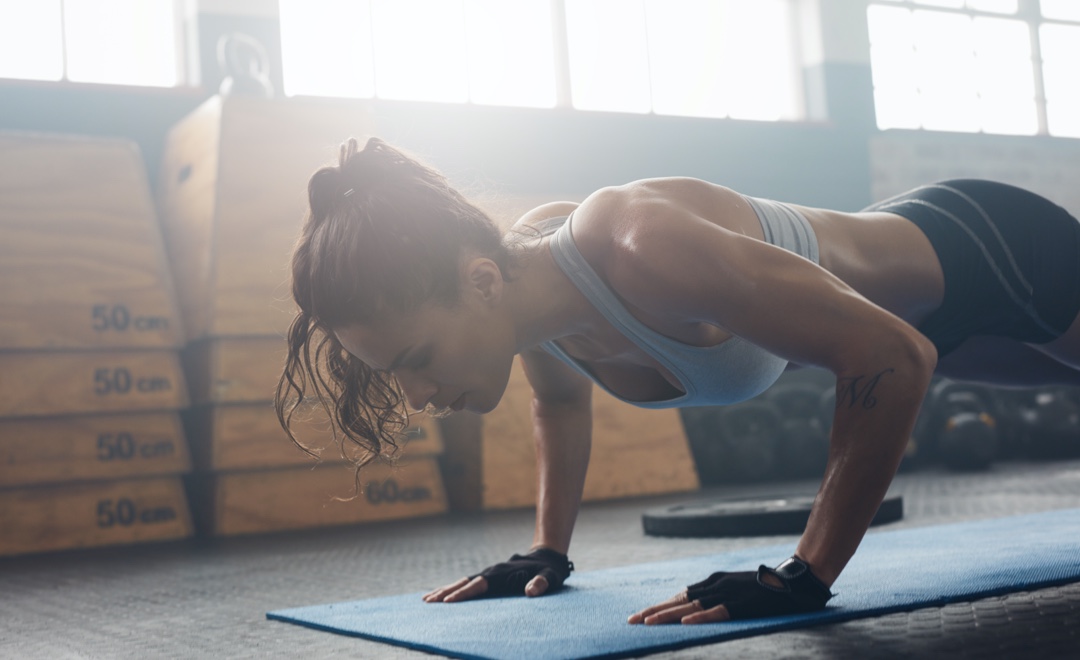
- Follow Care Instructions on the Tag
Wash your workout clothing in cold water and dry on a low heat setting. Avoid using fabric softeners as they build up on the fabric and interfere with the garments moisture wicking properties. If you have a garment with stubborn odors, you can add one cup of white vinegar to the wash. As with all your garments, the care instructions on the tag should be the final authority on caring for a specific article of clothing.
- Avoid Exposing to High Heat
Blended fabrics such as Lycra can quickly lose its elasticity when exposed to high heat in the washing machine or dryer. If you've ever accidentally put your favorite pair of yoga pants in the dryer, you know they're never quite the same again. To preserve the look and performance of your clothing, skip the dryer all together and hang your athletic gear to air dry. If hanging to dry and special care instructions are too much of a hassle for you, play it safe and take your athletic gear to a professional cleaner who knows exactly what to do to keep your athletic gear smelling fresh and looking great.
Topics
Rinse Drop
We offer pickup and delivery if you can’t be present between 8pm and 10pm.
Our Valet will pick up or deliver your order to your doorstep or concierge, at which point you’ll receive a text with a photo showing where your items were left.
You can enable Rinse Drop on any (or all) of your orders.

